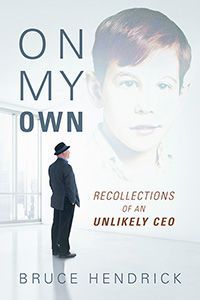Build Trust by Going to the Icky Place
Build Trust by Going to the Icky Place
We’ve all been there – perhaps you are there right now. We’re at the edge, poised to talk about an issue that is awkward, uncomfortable, and (we fear) potentially volatile with another person. This issue matters, otherwise we wouldn’t have anxiety about it.
It’s what I call the icky place. And we hover above it, reluctant to “go there.” Our reluctance is, in itself, the dead give-away that we’ve reached the icky place. If you are like most people, you now have three primary choices: bottle up your thoughts and feelings, dive in, or accept things as they are. Only one of these options provides the opportunity to build genuine trust.
Most of my clients lament that our co-workers, family members or friends are usually not even aware of our inner turmoil, either because they don’t want to see it, or that we are effective hiders of the truth. As youngsters we were taught “If you can’t say something nice, don’t say anything at all.” We perceive going to the icky place as ‘not nice,’ so no wonder we are silent. Let’s start here.
Bottle Up our Thoughts and Feelings
This often begins in a harmless way: we tell ourselves to wait and see if the issue repeats. Is it real? We need to pick our battles, right? Don’t sweat the small stuff, we think. But it’s real, alright. Then we might buy ourselves “just a little” more time before confronting it. Maybe the other person is going through a bad time. Maybe this, maybe that… but now the pattern is well established. The snowball rolls into a small boulder. Confronting it now will be tougher since we have kept quiet all along.
The place seems too icky so maybe we now decide to just live with it. This is a common but very expensive choice. We are bothered by the issue but feel immobilized and scared to take action. Stress continues to build.
In my training I call this a beach ball ; we can’t let up our effort to keep it submerged lest it pop up in our face. The hallmark of bottling up is that the relationship gets stuck; the issue morphs into a psychological wall and it takes extra effort to see past it. Distance and mistrust settle in. Sooner or later, unless we can deal with this intractable problem, either we grow miserable or exit the relationship entirely.
Dive In
The way to build trust is to dive in and deal with the issue. (Easy for me to say.) Future blog posts will cover how to do this with best chances of success (as does our interactive training ). Even if done imperfectly, it’s the choice to go through the icky place that makes all the difference.
Overcoming our natural reluctance to discuss sensitive, difficult, or potentially embarrassing subjects takes more than just willpower. It often requires that we replace our hesitant self-talk with more empowering thoughts such as:
- “The other person wants to know the truth – just like me.”
- “It’s a 2-way street and I’m probably contributing to this issue somehow.”
- “I care enough about the organization, the person, and myself not to live like this.”
- “In the long run I’m doing both of us a huge favor.”
- “I’ve been through tougher times than this. I can handle it and so can they.”
- “This is my chance to show how much I care.”
Imagine how good it will feel to clear the air. Breathe deeply and dive in!
Accept Things as They Are
While not as productive at trust-building as diving in, sometimes I advise acceptance as the way to go. Acceptance is best applied to those issues (or people) over which we have no power . It doesn’t resolve the issue, but it still offers a viable way to release the beach ball. We are trying to diffuse the stress and unresolved conflict. Examples might be: a loved one’s choice of spouse or a co-worker’s political polarization. Once we accept these things as out of our control, the door may open for the relationship to improve at a later time.
There’s a catch, though. If we try to jump from bottling up our thoughts and feelings directly to acceptance, we often kid ourselves. Unless we’ve at least tried to discuss the problem, we may in truth be trying to push the beach ball down even further. Acceptance is a worthwhile strategy to reclaim our own private serenity, but if we skip the icky place altogether, the opportunity to build trust with the other person usually fades.
In summary then, trust has the greatest chance of being built when we risk opening ourselves up and going through the icky place. Yet this is only one side of the equation; we still need the other person to respond in a positive way. In future posts we’ll explore how to do this with the greatest odds of success.
 “Bruce Hendrick, in his book “On My Own” takes the reader on an amazing journey. It begins with his childhood, a time when his mother’s mental illness caused great hardships for his family. His father’s quiet guidance helped direct his future. Bruce, in a wonderfully whimsical manner, describes his many adventures as he was growing up. From his first girlfriend, Darla, to Boy Scout initiations, to almost getting killed right after getting his driver’s license, to nearly being arrested by the FBI. This is a great story of resilience, determination, survival, and purpose.”
“Bruce Hendrick, in his book “On My Own” takes the reader on an amazing journey. It begins with his childhood, a time when his mother’s mental illness caused great hardships for his family. His father’s quiet guidance helped direct his future. Bruce, in a wonderfully whimsical manner, describes his many adventures as he was growing up. From his first girlfriend, Darla, to Boy Scout initiations, to almost getting killed right after getting his driver’s license, to nearly being arrested by the FBI. This is a great story of resilience, determination, survival, and purpose.”
-Boaz Rauchwerger , Vistage International Speaker of the Year




